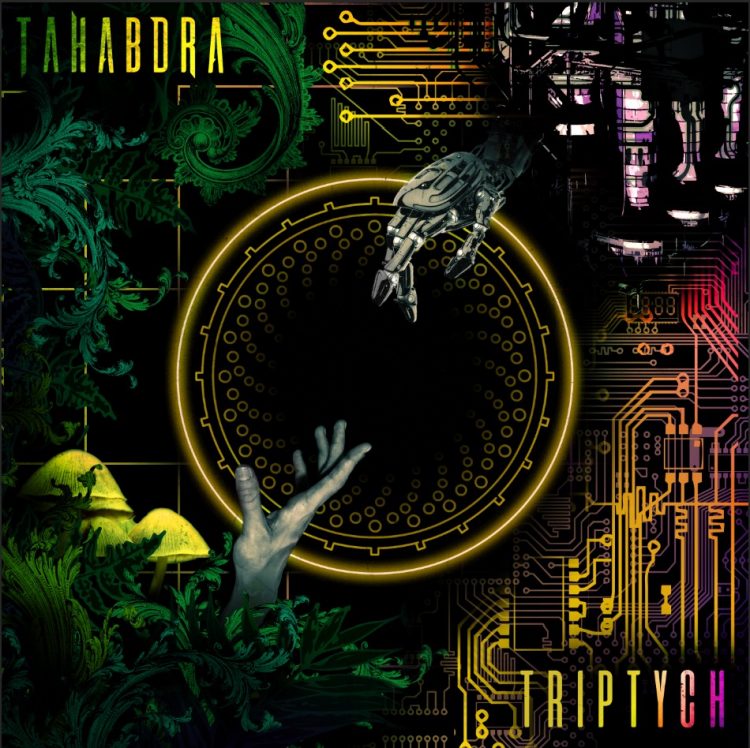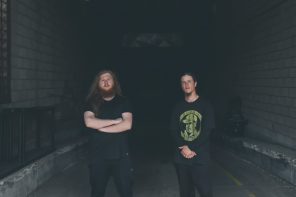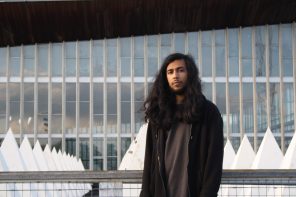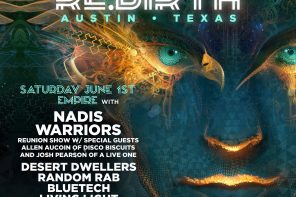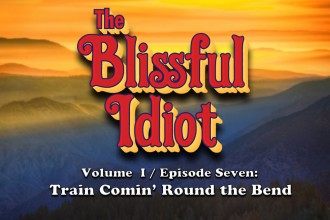Download your copy of TAHABDRA’s ‘TRIPTYCH’ on Bandcamp now!
To be clear, Tahabdra’s intentions with the TRIPTYCH EP were not particularly concerned with drum and bass’s culture, or especially with its fans. This EP is an elaborate and impressive exercise in sound design with a unique mission. The challenge with assessing experimental music is partly that, when executed well, it often sounds pretty normal to the uneducated ear. Masters of subtlety, Tahabdra’s latest EP falls under this category. Likewise, it is an interesting experimental exercise to analyze the TRIPTYCH EP in terms of drum and bass. Skip down to the end of my piece for the Q&A to read about the TRIPTYCH EP in the artists’ own words.
From a birds-eye perspective, today’s emerging experimental movement within drum and bass is wholly natural: as the only living common ancestor to modern electronic bass music, the genre’s expansive sound and its equally lively scene are deeply entrenched at the foundation of modern music and club culture. After three decades of propagation, artistic evolution is not only inevitable – its healthy, and intrinsically unique. But from the shuttered vision of its roots, every shift in the sound constitutes a locus of controversy. The aging diehard “junglist massive” is bound to a doctrine of purism bred on the pedestal of “back in the day.” To these aficionados, the genre’s boundaries and categorizations are constantly contested (rarely to consensus) and any slight challenge to historical convention is blasphemy akin to burning bibles.
Still, experimentation is adopted and accepted incrementally. Now, drum and bass is a bubbling hotbed of sound exploration. Despite the shade often hurled toward certain artists, labels, subgenres and adoptive offshoots on the grounds of artistic exploitation and “selling out,” today’s multi-tiered community seems to warily accept this as a positive.
Their caution is usually reserved for blatantly commercial renditions, but gatekeepers often aim their skeptical stink-eye towards artists like Tahabdra. The Boston-based duo lands seemingly spontaneously from the cosmos to deliver the TRIPTYCH EP. Tahabdra boasts little demonstrated history with drum and bass’s militant culture. Their biography not only cites transformational festival scene staples like ill.Gates, Zebbler Encanti Experience, and Alex Grey…its headline reads “Biologically Beneficial Progressive Bass Music.”
Relative to drum and bass’s traditionally edgy, underground aesthetic, the branding strikes the purist eye as offensively colorful and perhaps suspiciously heady – even before one glimpses the references to the Fibonacci sequence and the golden ratio.
The reading around the TRIPTYCH EP is understandably intimidating – perhaps by intent. But on the other side of the “play” button lies an alternative, emotional realm, revealed as the rolling percussive intro to the release’s first act, “IBOGA” washes away any harbored doubts about the wookification of drum and bass and casts us into the horizon.
The 170BPM rhythm is manic, but familiar – immediately recognizable as the first of many tradition-honored conventions of drum and bass. One needn’t know the excessively guarded nuances of the genre’s history to get down to a drum and bass banger – but it’s obvious that Tahabdra has an intuitive grasp.
The track latches onto the genre’s defining tenets: chaotic percussive character, exploratory emphasis on rhythm and breaks, neuro-flavored mid-range growls and crisp, quietly authoritative sub-bass. Its energy tows a thin line between ecstasy and anxiety, underlined by sinister suggestions implied in the low-end vibe.
Despite its subliminal intricacies, the term “banger” isn’t an oversimplification. For fans of faster tempos and more confrontational styles, “IBOGA” holds easy appeal. From a superficial standpoint, it’s an adept interpretation of a classic convention.

But Tahabdra are definitely not conventional “drum and bass producers.” The Berklee-educated musicians are experimentalists to the core. On the simplest level, the label is justified by the duo’s integration of organic drumming in their tracks, a la partner Josh Weinberg. And their trademark tuning system utilizing the scientifically-certified 528hz, along with numerical roots of the natural world (the Fibonacci sequence and golden ratio), takes it many, many steps deeper. Still, “IBOGA” doesn’t flaunt its innovations. To most of us, the song plays out as a standard (albeit exceptionally well-produced) drum and bass track.
In a Q&A with duo halves Wiggz Caro and Josh, the pair elaborates on their progressively-less-peripheral relationship with drum and bass.
“I definitely look forward to getting my mind blown every Wednesday, when the new Noisia Radio episodes come out,” says Josh. For Tahabdra, Noisia appears as the portal granting access to the forward-thinking realm populated by artists like Ivy Lab, Mefjus, and Kasra. If the influence wasn’t obvious in “IBOGA,” it is prominently central in TRIPTYCH’s second act, “ZADYMA,” where the release breaks into halftime.
These days, 85bpm drum and bass is an established structural convention of its own – there’s little cutting edge to the half-tempo trend in itself. But in the mid- to late- 2000’s (roughly the halfway point of the genre’s total trajectory) the style’s invention and emergence was a controversy of its own. Still fundamentally attached to the genre’s rootsy, amen-riddled jungle archetype, the experiments of artists like Digital and Amit did not instantly catch on. Purists initially rejected the groovy slow-motion sound as a commercially motivated bastardization. Although half-tempo gained consistent momentum, its large-scale, global adoption is a recent development of the past five or so years (and yes, we can thank Noisia generously for that).
Tahabdra may be newcomers to the party, but drum and bass should embrace them with enthusiasm. Amongst today’s inescapable barrage of weirder-is-superior halftime assumedly created with the singular intent of confusing dance floors, “ZADYMA” is refreshingly… normal. The tune’s primary relic of the subgenre’s adolescent tradition is in a contagious bassline that traipses and grooves rather than sprints, accented by magnified sonic easter eggs that seem to slow the pace of time. But “ZADYMA” bears percussive aggression that strikes with full-tempo gusto, and re-iterates the first act’s neuro-flavored screeches and grimaces. A DJ might hear this tune as a bridge, ideal for moving from minimal, funky halftime into full-tempo drum and bass (or vice versa). A producer, however, is likely fixated on the dense sound design.
“My personal take is that DnB has always raised the bar in terms of production, emotive expression, and sound design… so its perfect to use as a genre to explore various rhythmic patterns and sound experimentation as the prime focus,” says Wiggz.
But there’s more to the three-paneled story conveyed by the TRIPTYCH EP than sound design alone. From the final act emerges an astute conceptual parable that mirrors the plotline of drum and bass itself.
95bpm is an obscure tempo for drum and bass, a genre anchored to frenzied speeds. But, it isn’t unheard of. Increasingly, drum and bass clings less to BPM and more to aesthetic and “vibe”: in the realm of modern jungle, BPM barely matters at all. The attitudinal shift is reminiscent of one historical sect of the original underground movement, which claims 200BPM “breakcore” as the true origin of jungle. Maybe the tune’s title, “Relapse,” is an intentional allusion to the full-circle phenomenon.
In the big picture, though, the imagining of TRIPTYCH as a just another drum and bass EP sort of misses the point. Their goals far transcend the bickering approval of the cult-like community. They strive to change the world.
This is where 528hz and “Biologically Beneficial Progressive Bass Music” starts to make sense. The physiologically benefitting properties of 528hz – especially in the spiritual context of religious hymns and chants, which much dance music emulates through repetition and ritual – has a substantial focus today from a wide variety of scientists. Such is the basis of Tahabdra’s tuning system, which evidently relates to the Fibonacci sequence and the golden ratio as well (I’ll allow the artists to explain for themselves in the attached Q&A). If one must ascribe a purpose to Tahabdra’s music, it isn’t to impress, or mystify – it is absolutely to have a positive effect on people at a biological, physiological, and molecular level.
Hence the duo’s foray into bass music’s dim underworld. The TRIPTYCH EP stands in stylistic contrast to the expectations surrounding psychedelic bass music: it is urban rather than tribal, dystopian rather than utopian, a vibrant landscape drained to greyscale. In its total embracement of the genre it embodies, the EP swallows its optimistic origins to take on the cynical psyche of electronic music’s disillusioned fringe. And, in this clever parable, Tahabdra reaches out to a different population – arguably the one that needs their ideas the most. At that frequency, the TRIPTYCH EP plays out like a call to the broken, beckoning to come and become whole.
“I really think that’s part of our job as artists – to inspire various parts of society in ways to move towards a better future.” – Josh
Full Q&A with Tahabdra
How does your creative process work when making tunes? Where do you start/which elements come first/how does incorporating organic drums alter or inform on the production process?
Wiggz – The creative process can change depending on the vibe we go for. During this EP a lot of inspiration came from listening to Noisia Radio shows and having an alternative take on the tunes we heard. Having the vibe in mind as the end goal helped us sculpt sounds to pursue that direction. We will make first draft ideas in Ableton to create a structure and then produce the full track. Using Serum we can apply the tuning system and render many sounds and experiments as audio to edit more meticulously. Afterwards we will perform it in shows and test out the crowd response. Once we consider it’s time for releasing a song, we will go back and refine elements and integrate Josh’s drum interpretation. Then there’s a long process of taking Josh’s drum recording and making the programmed drum sounds align with his rhythms so they sound cohesive and retain his interpretation. Most times we find that less is more, so we start stripping away layers in order to make room for the drums and essential sounds.
Josh – I would just add to what Wiggz is saying here with mentioning that the songs featured on this EP are ones we’ve been playing live for a quite a while now, so I’ve really been able to hone in on my live drum parts. So with this EP, we’re essentially delivering the sound we are hoping to achieve in a live setting, with a bit more processing to give it a more polished, studio sound. More recently, we’ve been working with incorporating the live organic drums more at the beginning of the process, drafting a sketch in Ableton initially, then bringing in a scratch drum take, and then continuing to build the songs with the drums more in mind from the start. This way, we hope to save time later in our process and focus on what matters right from the start.
What’s your take on the current experimental jungle/dnb rennaissance – do you see yourselves as a part of that movement? Any musical influences within that genre realm?
Wiggz – My personal take is that DnB has always raised the bar in terms of production, emotive expression, and sound design. I would consider ourselves as fans of different styles of music that inspires us to make our own interpretations using our tuning system. DnB has an extensive vocabulary of sound design, so it’s perfect to use as a genre to explore various rhythmic patterns and use sound experimentation as the prime focus. I don’t consider myself as part of the movement, but I must say it is very exciting to listen to it. As for influences, I’d say Noisia, Ivy Lab, Mefjus, Current Value, and many others helped us get started on producing this EP.
Josh – I think what’s happening with the dnb scene currently is very dope. In all honesty, I’m pretty new to it. Just in the past few years, I’ve gotten really into it – Wiggz showed me a few tracks and I got pretty hooked. I definitely look forward to getting my mind totally blown every Wednesday when the new Noisia Radio episodes come out. Imho, Mefjus’s “Manifest” album really stands as a pinnacle for where things are at these days – in terms of wild sound design, unique rhythms, and overall cutting edge production. All the Manifest remixes that have been coming out on VISION have been straight fire too. We are definitely inspired by this movement, especially with this release. In addition to the artists Wiggz is mentioning, I would say NICKBEE, Culprate, and Kasra are all doing big things and are highly inspirational and influential.
Which came first for this EP – the tunes, or the concept?
Wiggz – Tunes were made first, and then the concept started taking shape as the project moved along.
Josh – When we first started to get going with this project, making music that is based on this alternate tuning system, we had to more or less throw away any conception of producing “tonal” music, at least in the traditional sense. As Wiggz said in his response to the previous question, working within the dnb-inspired context allowed us to break free from abiding to traditional harmony and have the focus instead be on the rhythms and sound design.
Once we were thinking about our next release and realizing these 3 fit best together, we developed the TRIPTYCH concept – a triptych being “a set of three associated artistic, literary, or musical works intended to be appreciated together”. And then from there we gave Pat (aka Digital Vagabond) the task of designing the cover art to depict a triptych theme, having natural & organic elements on the left side, technological sci-fi-esque elements on the right, and the convergence of the two, essentially the singularity, in the middle. And hats off to him – as we were brainstorming ideas we were asking ourselves how in the world was he going to pull off what we were asking of him and honestly couldn’t be happier with the end result. So which came first – the tunes or the concept? I think it’s a bit of the chicken+the egg situation.
How do you imagine people enjoying this release – in what setting, etc? Although these tracks are clearly intended to be listened to together, as one cohesive piece of music, how do you feel about DJs playing the tunes individually in a club/festival setting?
Wiggz – I feel these tunes translate best in a big sound system. We are always honored and gratfeul when DJs support our tracks in any club/festival setting. Ideally we enjoy playing the tunes live to give people an added experience of the songs and arrange it in different ways to make the show special.
Josh – This is definitely sound system music, as Wiggz is saying, big sound system music haha. We definitely want and encourage DJs to play any one of these tracks in any club/festival set as they see fit. However, being an advocate for listening to albums, and EPs, in their entirety, I do really hope people will bump this EP front to back in their cars, headphones, and speakers at home. This release is a snapshot at a critical point in honing in on our creative process and paying homage to a style that has really inspired and influenced us on many levels. Having listened to Noisia, Ivy Lab, Mefjus, etc. so much over the past few years, I’m incredibly stoked to be finally putting this music out, our contribution to a community which has really left a significant impact on myself as a musician and which has helped defined our sound and path thus far.
You’re known for tuning to 528hz – can you expand on your interpretation of the healing power of sound? How do you hope to harness it through your music, and to what ends?
Wiggz – Josh is much better at answering this… Me personally, I believe the tuning system does have properties that make it sound and feel different than regular music. This EP does emphasize a lot of the aggressive aspects of the sound. In the future, we are experimenting with various more genres to widen the ways the tuning system can be used. As the catalog of songs expands the meaning and experience of the tuning system will become clearer and clearer. So far in this path we have acknowledged that it’s useful for exploring energetic sound design and a vast array of rhythms. The most important thing to know is that we are only getting started with the possibilities.
Josh – I believe we, as a species, are just skimming the surface of the healing power of sound. We all know music can make us feel good, make us dance, and make us lose ourselves in ecstatic experience, but I think this is only the start to understanding what sound can really do. The idea that sound can have a positive effect on a biological level, on a cellular and molecular level within the body has really captivated me since first thinking about it and looking into it. We as humans only use about 20% of the codons within our genetic material. That’s 80% of genetic material unused. The old school of thought was that this was just “junk DNA”, left over from ancestors without any real use to us now or in the future. However, there’s been a new theory that this 80% is untapped potential for evolutionary growth.
The question is then, how do we unlock this hidden potential? I personally think the answer lies in vibration, in sound. If we can vibrate the codons in the right way, with the right frequencies, we can activate them and perhaps evolve into a more peaceful, less ignorant, less greedy, less hostile species. There is still a lot of research that needs to be done but I would like be involved in moving this work forward, at the very least inspiring reputable scientists to explore this idea more – I really think that’s part of our job as artists – to inspire various parts of society in ways to move towards a better future.
There was a study that came out in June 2017, authored by Gholam Hossein Riazi, the head of the biochemistry dept. at the Institute of Biochemistry and Biophysics at the University of Tehran, who tested the effects of 528Hz to reduce cell death in astrocyte cells treated with ethanol. My understanding is that astrocyte cells play a significant role in the development of Alzheimer’s Disease and dementia and this study could be a step towards proving that sound therapy, specifically 528Hz, can help in the prevention of these terrible neurological diseases. If we can make the slightest impact with furthering this work and research, I would call that a success. The original idea with our music was to blend music/sound therapy with dance music culture. I’ve gone to many music festivals where I’ve felt a disconnect in the sense that the “sound therapy area” is way out in the middle of nowhere where everyone lies down and gets totally relaxed. There is absolutely nothing wrong with that – I’ve really enjoyed that experience at various festivals but I’ve personally always felt more pulled to the stages, where the music is more lively and people are dancing their butts off.
So we’ve brought it on as a mission to fuse these two worlds – bring the healing power of music to high energy dance settings. However, as Wiggz is saying, we’re now exploring other styles – to diversify the sets we play and the type of events we can cater to. So be on the lookout for some very different releases coming from us in the near future and more varied and dynamic live performances that dive into new territories.
Anything else you want people to know about yourselves or the TRIPTYCH EP?
Josh+Wiggz – Just want to thank you Amye and the whole LiS crew and community for hearing us out and supporting what we’re doing, we truly appreciate it. Thank you to everyone who’s taken the time to read this and listen to the TRIPTYCH EP! We’ve been working on this music for a while and feels great to get it out there! Really looking forward to the next chapter, got some gigs we’re real stoked to announce in the very near future and we’ve already been working extensively on a bunch of new music to switch things up and keep it movin.
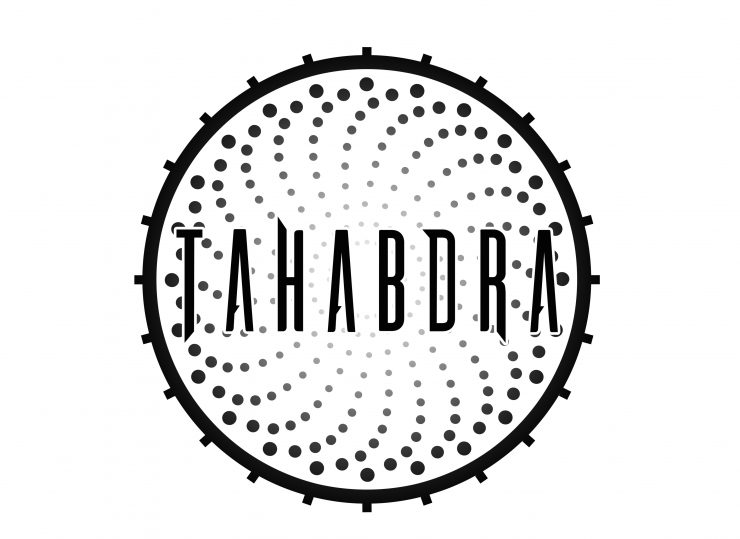
Tahabdra Bandcamp
Tahabdra Soundcloud
Tahabdra Facebook
Tahabdra Instagram
Tahabdra Twitter

